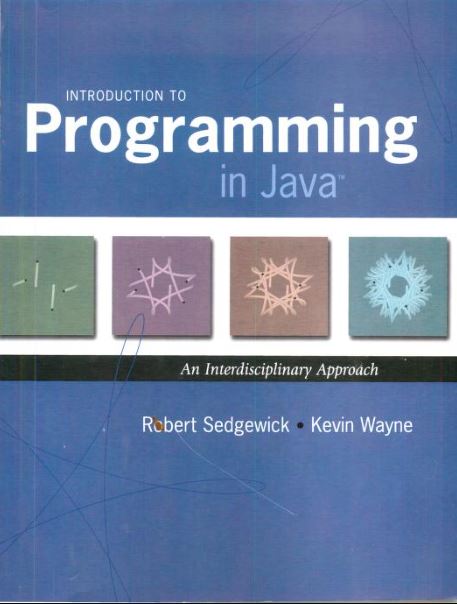‘Introduction To Programming In Java’ PDF Quick download link is given at the bottom of this article. You can see the PDF demo, size of the PDF, page numbers, and direct download Free PDF of ‘Introduction To Programming In Java’ using the download button.
Introduction To Programming In Java PDF Free Download

Introduction To Programming In Java
Your goal in this lesson is to convince you that writing a program is easier than writing a piece of text, such as a paragraph or an essay.
Writing prose is hard, we spend years in school learning how to do it. In contrast, just a few building blocks are enough to enable us to write programs that can help solve all kinds of interesting problems.
But otherwise unattainable, problems. In this chapter, we’ll introduce you to these building blocks, introduce you to programming in Java, and explore a variety of interesting programs.
You will be able to express yourself (by writing programs) in just a few weeks. Like the ability to write prose, the ability to program is a life skill that you can continually improve upon in the future.
In this book you will learn the Java programming language. This task will be much easier for you than, for example, learning a foreign language.
Indeed, pro grammar languages are characterized by no more than a few dozen vocabulary words and grammar rules.
Much of the material we cover in this book can be expressed in the core C++ languages, or many other modern programming languages.
But we specifically describe everything in Lava so you can start building and running programs right away.
On the one hand, we’ll focus on learning to program, as opposed to learning the details about Java.
On the other hand, part of the challenge of programming is knowing which details are relevant in a given situation.
Java is widely used, so learning to program in this language will enable you to write programs on multiple computers (for example, your computer).
Plus, learning to program in Java will make it easier for you to learn other languages, including lower-level languages like specialized languages like MATLAB.
1.1 Your first program
In this section, we plan to introduce you to the world of Java programming by taking you through the basic steps required to run a simple program.
Java is a collection of system applications, it is not unlike many other applications that you are used to using (such as your word processor, email program, application, you need to make sure that Java is properly installed on your computer .
It comes preloaded on many computers, or you can easily download it. You also need a text editor and a terminal application.
Your first task is to visit http://www.cs.princeton.edu/IntroProgramming to find instructions for setting up such a Java programming environment on your computer.
Programs In this section we refer to this site as the Book Site.
It contains an extensive amount of supplementary information about the contents of this book for your reference and use.
It will be helpful for you to have your browser open while programming on this site.
Programming in Java To introduce you to developing Java programs, we break down the process into three steps.
To program in Java, you must:
- Create a program by typing this in a file named MyCode.java. Compile it by typing javac MyCode.java in a terminal window. Run (or execute) it by typing java MyCode in a terminal window.
In the first step, you start with a blank screen and end up with a sequence of letters typed on the screen, just like when you compose an email message or paper.
Programmers use the term code to refer to program text and the term coding to refer to the act of creating and editing code.
In the second step, you use a system application that compiles your program (translates it into a form more suitable for the computer) and puts the result into a file called MyCode.
Class. In the third step, you transfer control of the computer from the system to your program (which returns control back to the system when it terminates).
Many systems have many different ways to build, compile, and execute programs. We choose the sequence described here because it is the simplest to describe and use for simple programs.
| Author | Robert & Kevin |
| Language | English |
| No. of Pages | 735 |
| PDF Size | 90.5 MB |
| Category | Computer |
| Source/Credits | archive.org |
Introduction To Programming In Java PDF Free Download
